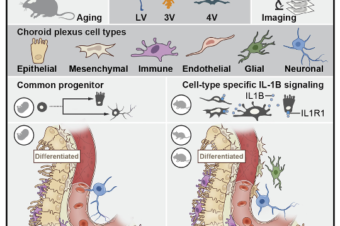Abstract:
Novel composite films combining biocompatible polysaccharides with conducting polyaniline (PANI) were prepared via the in-situ polymerization of aniline hydrochloride in the presence of sodium hyaluronate (SH) or chitosan (CH). The composite films possess very good cytocompatibility in terms of adhesion and proliferation of two lines of human induced pluripotent stem cells (hiPSC).
Moreover, the cardiomyogenesis and even formation of beating clusters were successfully induced on the films. The proportion of formed cardiomyocytes demonstrated excellent properties of composites for tissue engineering of stimuli-responsive tissues. The testing also demonstrated antibacterial activity of the films against E. coli and PANI-SH was able to reduce bacterial growth from 2 × 105 to < 1 cfu cm-2. Physicochemical characterization revealed that the presence of polysaccharides did not notably influence conductivities of the composites being ∼1 and ∼2 S cm-1 for PANI-SH and PANI-CH respectively; however, in comparison with neat PANI, it modified their topography making the films smoother with mean surface roughness of 4 (PANI-SH) and 14 nm (PANI-CH). The combination of conductivity, antibacterial activity and mainly cytocompatibility with hiPSC opens wide application potential of these polysaccharide-based composites.
Carbohydr Polym. 2021 Feb 1;253:117244. doi: 10.1016/j.carbpol.2020.117244. Epub 2020 Oct 17.

Authors:
Daniela Jasenská 1, Věra Kašpárková 2, Katarzyna Anna Radaszkiewicz 3, Zdenka Capáková 4, Jiří Pacherník 5, Miroslava Trchová 6, Antonín Minařík 7, Jan Vajďák 8, Tomáš Bárta 9, Jaroslav Stejskal 10, Marián Lehocký 11, Thanh Huong Truong 12, Robert Moučka 13, Petr Humpolíček 14
1 Centre of Polymer Systems and Faculty of Technology, Tomas Bata University in Zlin, 760 01 Zlin, Czech Republic. Electronic address: jasenska@utb.cz.
2 Centre of Polymer Systems and Faculty of Technology, Tomas Bata University in Zlin, 760 01 Zlin, Czech Republic. Electronic address: vkasparkova@utb.cz.
3 Masaryk University, Faculty of Science, 625 00 Brno, Czech Republic. Electronic address: 432029@mail.muni.cz.
4 Centre of Polymer Systems and Faculty of Technology, Tomas Bata University in Zlin, 760 01 Zlin, Czech Republic. Electronic address: capakova@utb.cz.
5 Masaryk University, Faculty of Science, 625 00 Brno, Czech Republic. Electronic address: jipa@sci.muni.cz.
6 University of Chemistry and Technology Prague, Central Laboratories, 166 28 Prague 6, Czech Republic. Electronic address: Miroslava.Trchova@vscht.cz.
7 Centre of Polymer Systems and Faculty of Technology, Tomas Bata University in Zlin, 760 01 Zlin, Czech Republic. Electronic address: minarik@utb.cz.
8 Centre of Polymer Systems and Faculty of Technology, Tomas Bata University in Zlin, 760 01 Zlin, Czech Republic. Electronic address: vajdak@utb.cz.
9 Masaryk University, Faculty of Science, 625 00 Brno, Czech Republic. Electronic address: tbarta@med.muni.cz.
10 Institute of Macromolecular Chemistry, Academy of Sciences of the Czech Republic, 162 06 Prague 6, Czech Republic. Electronic address: stejskal@imc.cas.cz.
11 Centre of Polymer Systems and Faculty of Technology, Tomas Bata University in Zlin, 760 01 Zlin, Czech Republic. Electronic address: lehocky@utb.cz.
12 Centre of Polymer Systems and Faculty of Technology, Tomas Bata University in Zlin, 760 01 Zlin, Czech Republic. Electronic address: truong@utb.cz.
13 Centre of Polymer Systems and Faculty of Technology, Tomas Bata University in Zlin, 760 01 Zlin, Czech Republic. Electronic address: moucka@utb.cz.
14 Centre of Polymer Systems and Faculty of Technology, Tomas Bata University in Zlin, 760 01 Zlin, Czech Republic. Electronic address: humpolicek@utb.cz.





